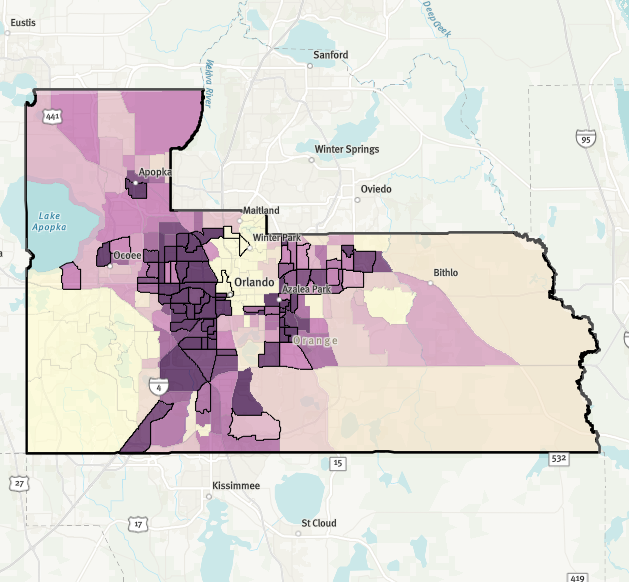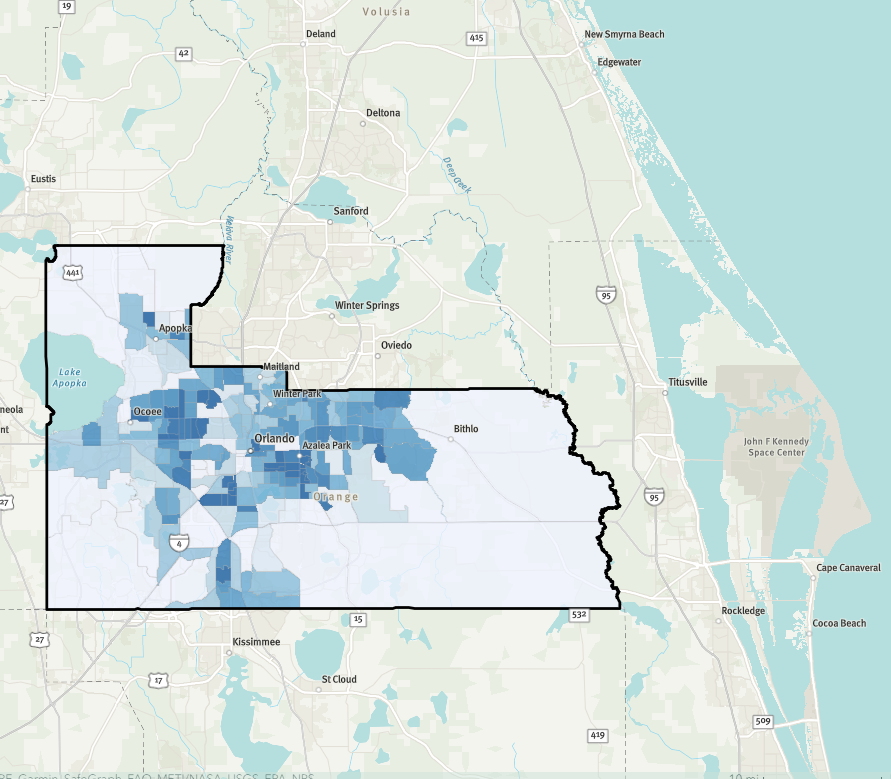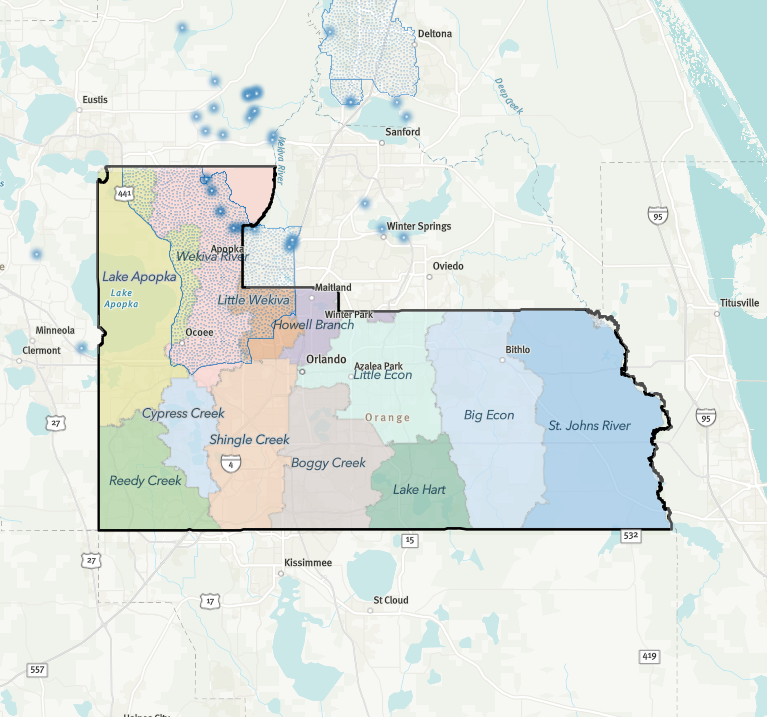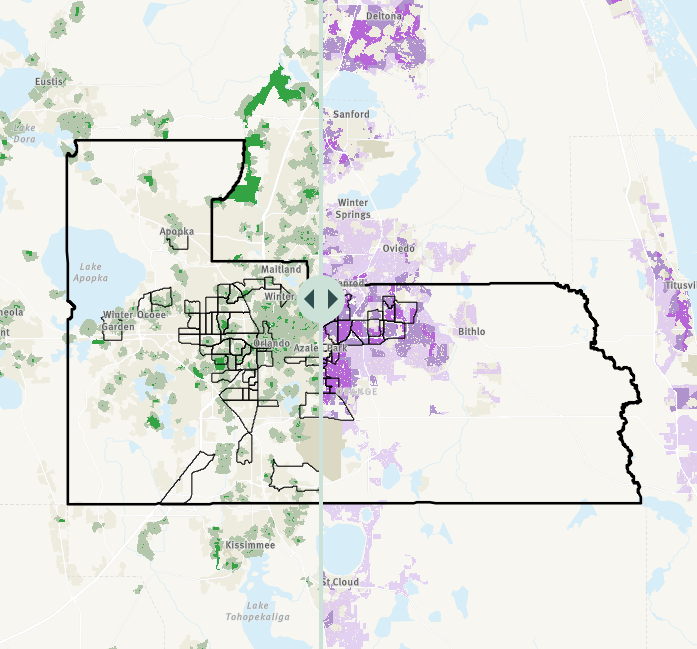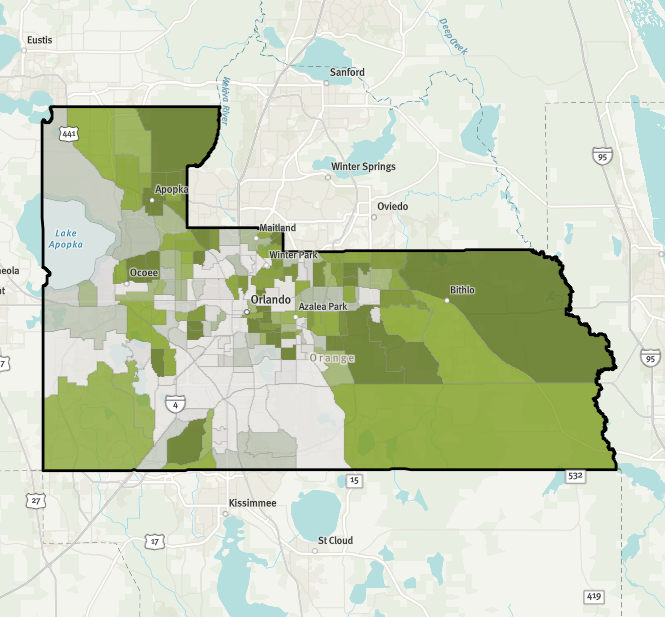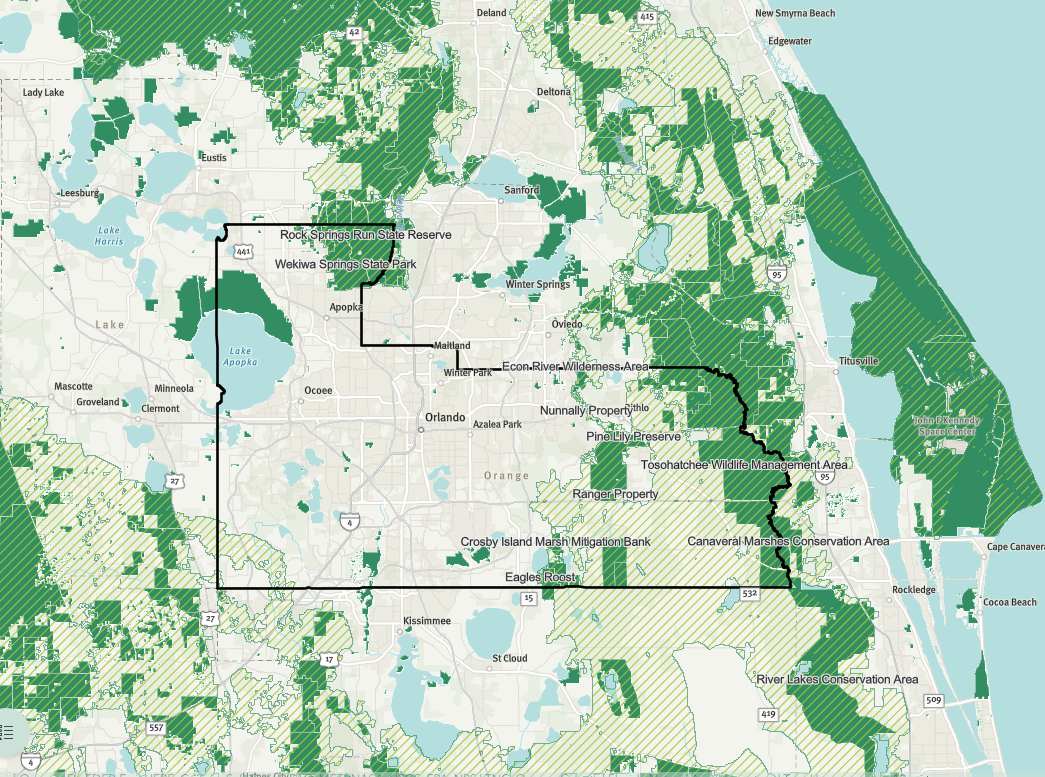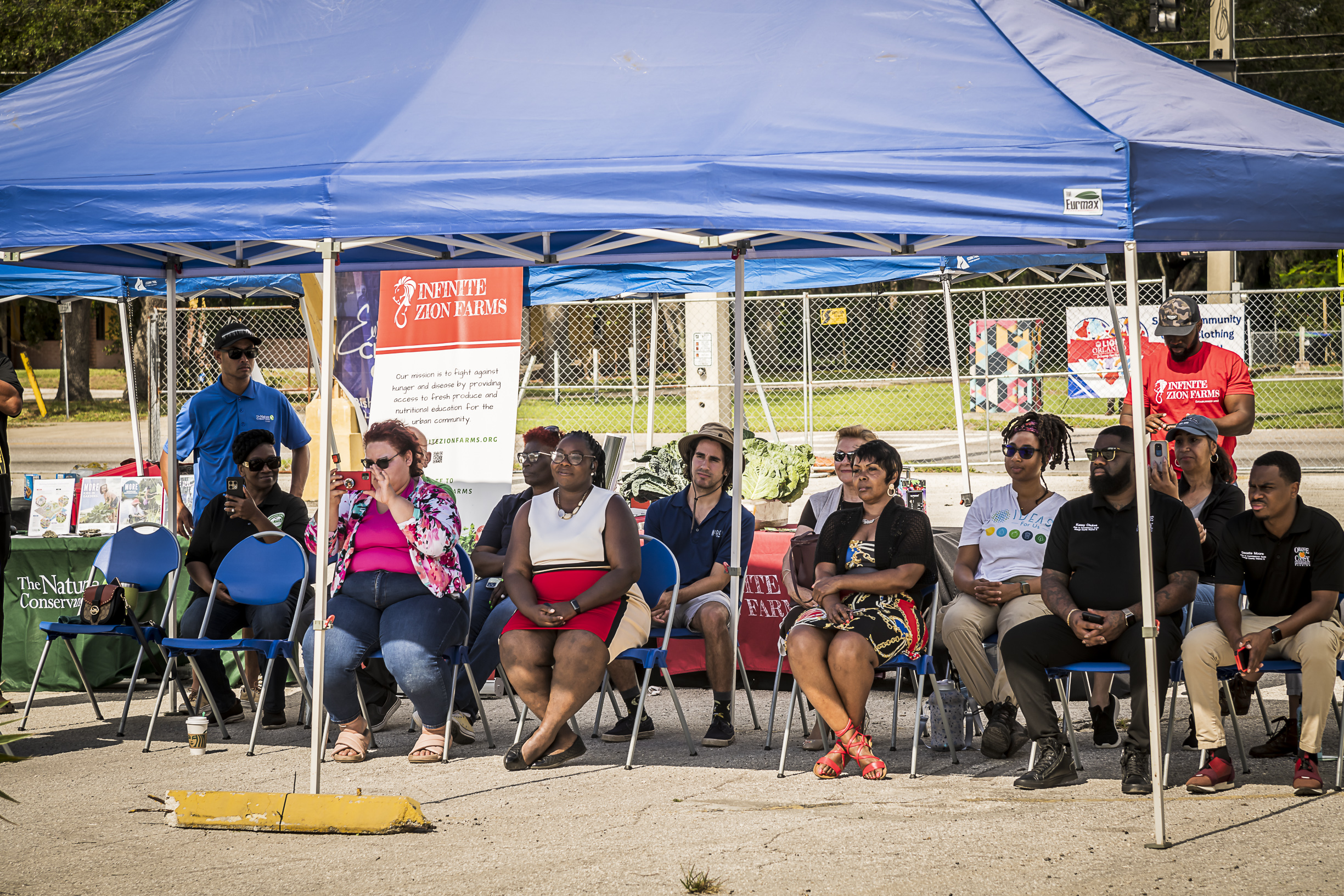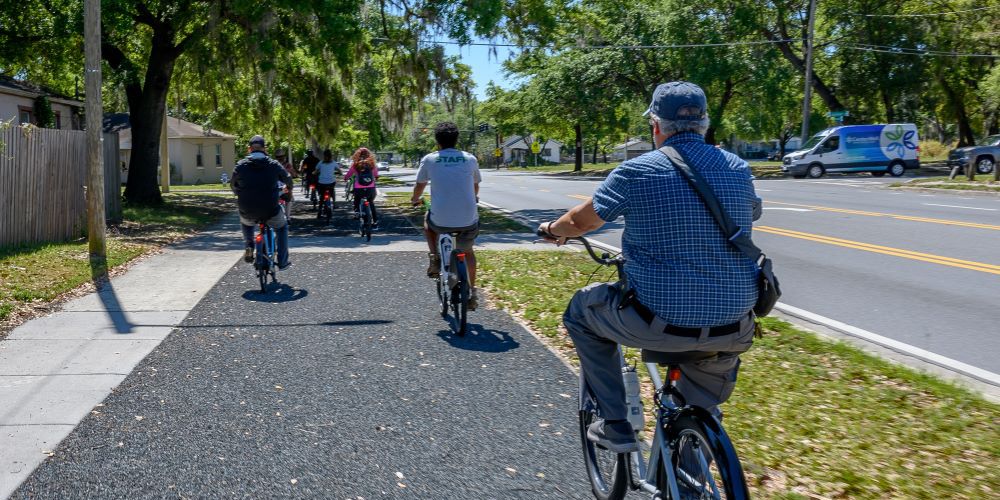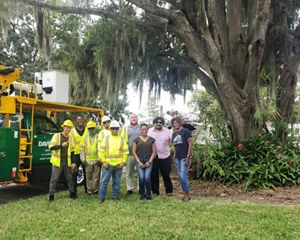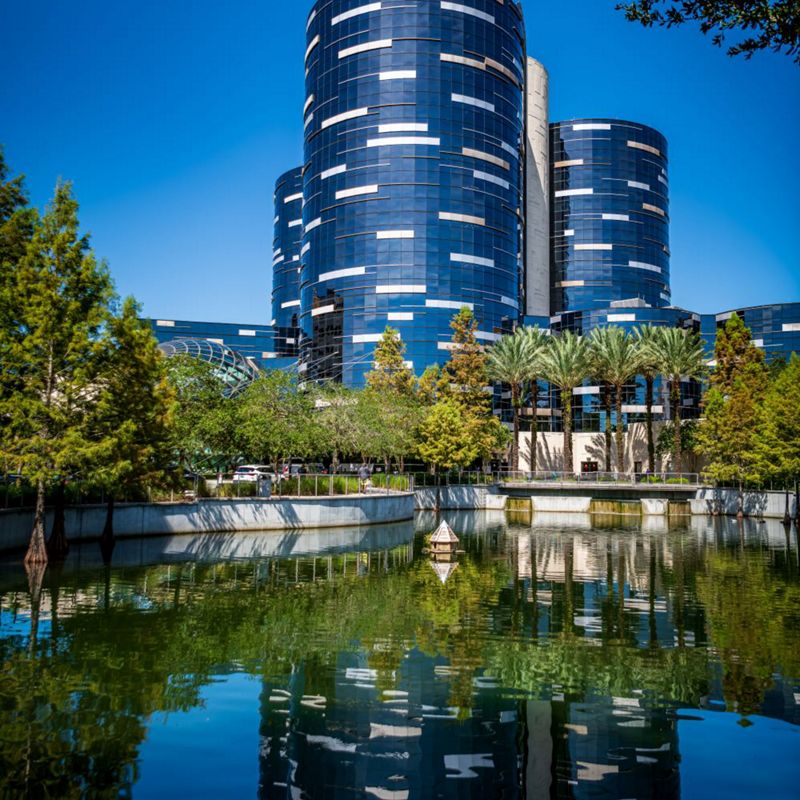
EcoResource of Orange County
New “EcoUrban Assessment Resource” mapping tool encourages nature-based solutions in Orange County
As one of the fastest growing counties in the country, Orange County, in central Florida, is faced with the need to balance rapid growth while supporting the natural resources that supply drinking water, help keep the air clean, provide recreation areas, and protect iconic wildlife. TNC created a new web-based mapping tool to guide decisions made by planners, managers, landowners, developers, community advocates, local nonprofits, and elected officials as they tackle the environmental, economic, health and other socioeconomic challenges of local communities.
EcoResource
EXPLORE THE TOOLThe EcoResource of Orange County visualizes location-specific data on environmental, economic, health, and other socioeconomic factors covering Orange County, Florida. For example, users can access maps that indicate how much tree cover a community has, or what urban temperatures look like during summer months.
“This new tool reveals the unique environmental challenges communities are facing and identifies communities that will be best served through collaboration on meaningful nature-based solutions,” says Christianah Oyenuga, Ph.D., TNC Sustainable Cities Manager in Florida.
The EcoResource Tool
Explore the ToolEcoResource of Orange County Maps
Users can access maps that indicate how much tree cover a community has, or what urban temperatures look like during summer months.
How the EcoResource Tool was Created
Centering Equity
To guide the development and design of this EcoResource tool, TNC collaborated with a diverse group of community stakeholders to understand and address the most pressing environmental challenges and local conservation needs, make recommendations, and identify strategic areas for local action.
By targeting outreach and surveying in six languages—reflective of the diverse cultures and vulnerable communities in Orange County—we heard the voices and perspectives of low-wealth communities and communities of color that experience systemic disinvestment and have not historically been included in the conversations about conservation.
By engaging with residents through neighborhood meetings, local events, and community conversations, TNC heard concerns from community members about exposure to heat, flooding, and litter and trash. Significantly, nearly 97% indicated the importance of water quality.
Frank Oscar Weaver with Alianza Center notes the attention TNC has demonstrated in crafting the EcoUrban Assessment Resource. “Throughout each phase of its development, TNC has maintained an inclusive approach, attuning the tool to the needs and perspectives of our frontline communities. The tool will help us quickly identify the environmental issues and opportunities our communities face, aiding us in developing effective strategies to better serve our communities towards a more sustainable and resilient future!”
Christianah notes, "Centering equity means conceptualizing, developing, planning, designing, prioritizing, implementing, and evaluating with diverse voices and perspectives” while working alongside communities. By engaging the community first, before creating the tool, we were able to better focus on the pressing issues faced by residents in Orange County and identify opportunities to reduce disparities, by encouraging the integration of nature and its benefits in planning—from cooler neighborhoods to healthier communities.
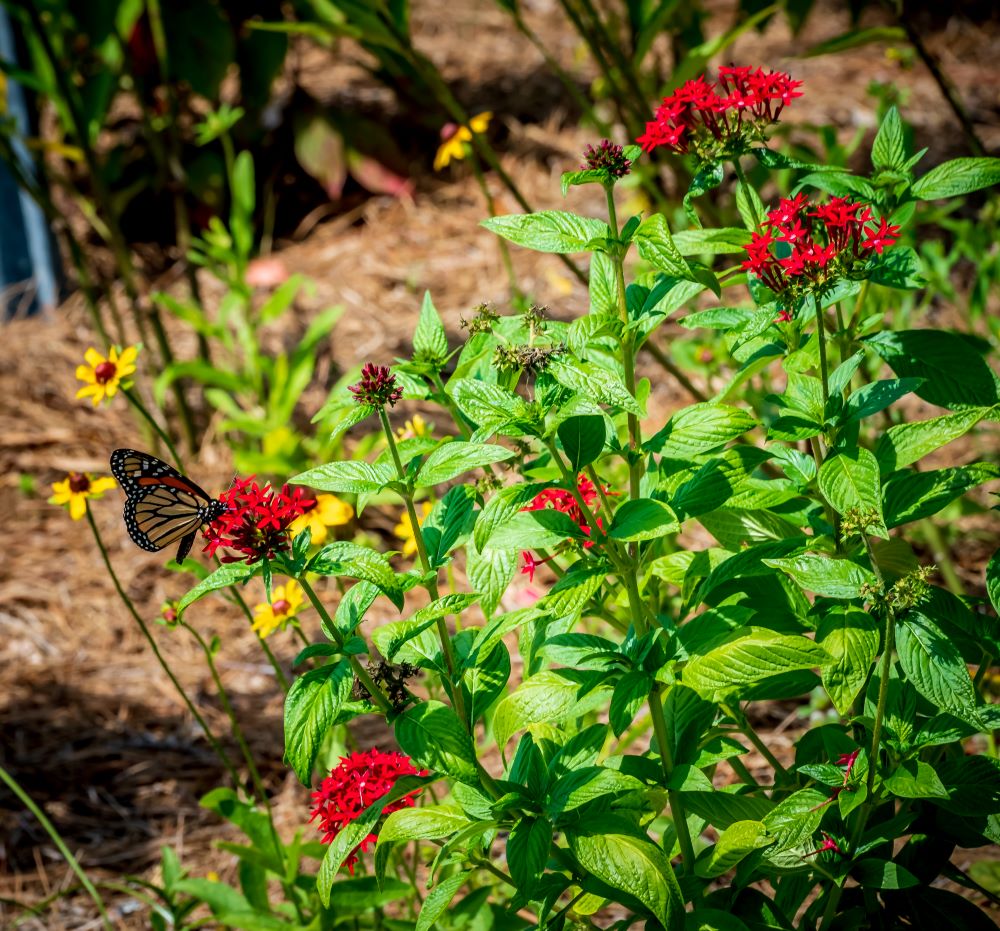
How the EcoResource Tool Works
Utilizing Data and Visualizing Communities
The tool is interactive and easy to use, offering location-specific data layers on flooding and heat issues, freshwater and tree canopy, park access and greenspaces, conserved lands, and other environmental and socioeconomic factors.
“It is fundamental for organizations to have access to data needed to drive collaboration and allocation of resources,” says Christianah. The EcoResource tool can help prioritize where to implement equitable nature-based solutions by identifying the communities facing the highest risks of flooding or extreme heat, prioritizing areas and populations that are best served by tree canopy or park access, propelling collaboration to influence local policy decisions, and ultimately driving resources to communities where nature-based solutions will be the most impactful.
"Environmental justice issues intersect with social challenges and economic disinvestment facing communities,” says Christianah. "This tool can help bring together nonprofits and community organizations to implement proven nature-based solutions that advance environmental justice and equitable conservation.”
EcoResource Sponsors
The EcoResource was made possible through the generous support of ADS Foundation and Duke Energy Foundation, and the many community partners and stakeholders who contributed insight, feedback and expertise.

We Can’t Save Nature Without You
Sign up to receive monthly conservation news and updates from Florida. Get a preview of Florida's Nature News email.






